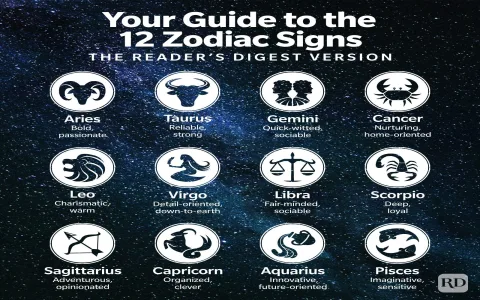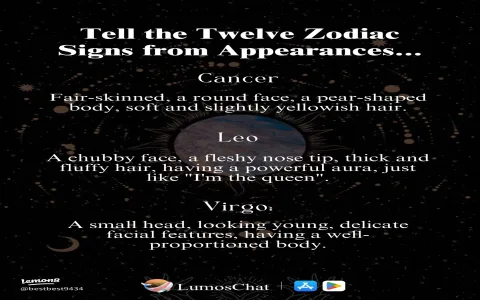The Day I Learned Astrology Was Practical
I didn’t set out to write about star signs and bad moods, believe me. I started this whole mess last spring trying to launch a small consultancy focused on streamlining logistics. I had the technical chops, but I desperately needed someone with sharp financial sense and the ability to hold a project schedule down like a bulldog. That’s when I brought in Vicky.
Vicky was absolutely brilliant. She could spot a misplaced decimal point from across the office, and her spreadsheets looked like works of art. Organized? She basically invented organization. At first, I was riding high, thinking I’d found the perfect counterbalance to my chaotic creative energy. I figured, finally, a partner who would make sure we actually finished things on time and didn’t forget to bill clients properly. I craved that structure.
What I got, though, wasn’t just structure; it was a wrecking ball wearing a pencil skirt. Vicky tore into everything. I mean everything. My initial marketing pitch? “Flabby, too much fluff, restructure immediately.” My carefully built client presentation deck? “The font choice is amateurish, the flow is illogical, start over.”
For weeks, I tried to tough it out. I swallowed the bile and redid things, sometimes three or four times. The problem wasn’t that she was wrong—often, her corrections made the final product better. The problem was the sheer, relentless volume of the criticism. It wasn’t constructive; it felt personal. It was like living under a microscope where every single molecule of your effort was deemed slightly substandard. It sapped my will to even start the next task. I was frozen, terrified of the inevitable dressing-down.
Charting the Criticism: When ‘Detail-Oriented’ Becomes Destruction
The breaking point came when we landed our first big client. We’d worked non-stop for 72 hours preparing the contract draft. I was exhausted, but I was proud. I hit ‘send’ to Vicky for a final check before the deadline. Two hours later, I got a 1,500-word email back. It wasn’t about the liability clauses or the payment schedule. It was about the way I structured the email subject line and the fact that I had used the abbreviation “i.e.” instead of spelling out “that is.” She accused me of jeopardizing the deal because of my “sloppiness.”
I was done. I wanted to walk away. I couldn’t understand why someone so fundamentally competent would actively choose to communicate in a way that just shredded morale. It was illogical. So, I started digging. My practice began right there, late one night, in a desperate attempt to find an external explanation for this internal misery.
I pulled every book I could find on personality management, conflict resolution, and leadership styles. Nothing quite fit the specific, surgical nature of her attacks. Then, almost accidentally, while scrolling through a completely unrelated forum talking about high-stress partnerships, someone mentioned the term “classic Virgo anxiety.”
I knew her birthday, so I plugged it in. Holy hell. It was like I had just downloaded the operating manual for my own misery.
My detailed documentation process started immediately. I had to understand the core traits that were fueling her annoyance, otherwise, I was going to lose my business and my sanity. I began logging every critical interaction and cross-referencing it with the textbook Virgo traits I found online.
The Practice Record: Deconstructing the Virgo Critic
What I realized very quickly was that the criticism wasn’t really aimed at me; it was aimed at the imperfection of the universe, and I was just the nearest accessible target. She wasn’t trying to be annoying; she was trying to prevent catastrophic failure, and her brain told her that failure lurked in every unaligned bullet point and slightly rough phrase. Her criticism was a preemptive defense mechanism driven by extreme anxiety.
Here are the key findings I logged, which completely shifted how I interacted with her:
- The Need for Total Control: The criticism stops when they feel 100% in charge of the system. I stopped trying to secretly run drafts by her. I started explicitly labeling documents as “Draft 1: For Vicky’s Organizational Review.” This acknowledged her inherent superiority in organization and calmed her down instantly.
- It’s Not Malice, It’s Fear: I learned to interpret the intense focus on tiny details (like font choices) as proxy measures for deeper, unexpressed fears (like “Will this company embarrass me?”). I had to address the fear, not the font.
- The “Pre-Critique” Strategy: If I presented something imperfect, she destroyed it. If I presented something and immediately pointed out its three biggest flaws first, she had nowhere to go. I would open the conversation by saying, “This deck is 80% there, but I need your input on slides 7, 12, and 18 because I know the transition points feel weak.” She felt validated and immediately jumped into problem-solving mode instead of judgment mode.
- The Impossible Standard: Virgo women are annoyed because nothing ever meets the perfect, silent standard they hold in their heads. I realized I could never achieve this standard. The goal became achieving their standard of “Acceptable for Public Consumption,” which is attainable.
I had to completely restructure my working style to manage her anxiety, which manifested as her being constantly critical and annoying. Did I stop being annoyed? No, not entirely. But by recognizing the source of the criticism wasn’t personal failure but rather the relentless, detail-driven nature of her sign, I stopped taking the hits personally. I learned to anticipate the microscopic review and provide a structured environment that satisfied her need for perfection before she had a chance to annihilate my work. That’s how I saved the partnership, and honestly, that’s how I finally finished a project on time without having an ulcer.





